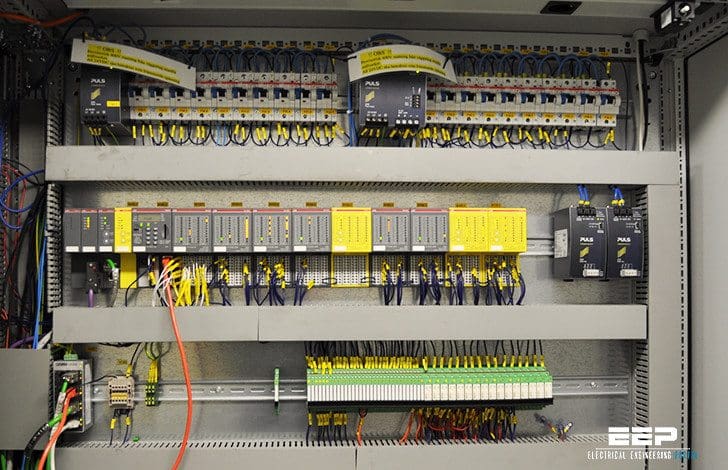Electrical Troubleshooter
This “Study Guide” is designed to provide the electrical troubleshooter with a review of, and the mechanical troubleshooter with an introduction of, basic electrical skills needed for him/her to safely and more efficiently carry out their duties in the plant environment.

After successful completion, the troubleshooter can improve their understanding of DC, AC, three phase circuits, Relays, Contactors, PLC, Electronics, and other related technology.
Applied Electrical Theory
To improve the understanding and application of electrical theory related to the principles of operation of manufacturing equipment.
- Draw and solve for circuit parameters resistance, voltage, current, and power in:
– D.C. series circuits
– D.C. parallel circuits
– D.C. complex series/parallel circuits - Understand the properties of magnetism and how they relate to electromagnetic concepts as applied to contactors, relays, generators, motors, and transformers
- Explain the generation of an A.C. sinewave using the associated terms
- Draw and solve for circuit parameters such as resistance, inductance, inductive reactance, capacitance, capacitive reactance, impedance, voltage, current, and power in:
– A.C. series resistive circuits
– A.C. series inductive circuits
– A.C. series capacitive circuits
– A.C. series combination RLC circuits - Draw transformers, explain the operating principle, and solve problems using voltage, current, and turns relationships
- Understand three phase concepts:
– Advantages and disadvantages
– Waveform generation
– Calculations for Wye and Delta circuits - Understand three phase motor concepts:
– Squirrel Cage motors
– Wound Motors
– American motor connections // European motor connections
Electrical Schematics
To improve the understanding of the different types of electrical drawings and the use of electrical drawings associated with trouble-shooting procedures.
- Recognize the standard electrical schematic symbols
- Relate symbols to the actual device
- Use symbols and basic drawing techniques to draw valid circuits from word descriptions
- Use electrical schematics to determine operating cycles for machines
- Use electrical schematics to analyze conventional machine faults such as open circuits, ground faults, and short circuits
Troubleshooting Procedures and Equipment Technology
To improve the understanding of safe, simple, and logical trouble-shooting procedures on conventional relay controlled machines.
- Have become familiar with and practiced appropriate safety procedures during trouble-shooting
- Be able to locate and repair open circuit faults using a safe, efficient procedure
- Be able to locate and repair ground faults and short circuits using a safe, efficient procedure
To improve the understanding of the operating principle of industrial input and output devices, protection devices, ac motors, dc motors, motor brakes and other associated electrical control devices.
- Understand and be able to explain the operating principles of conventional electrical components such as push buttons, limit switches, fuses, overcurrent relays, electro-magnetic relays, and contactors
- Become familiar with the proper use and care of multimeters, amprobes and megohm-meters
| Title: | Study guide to AC/DC three phase circuits, relays, contactors, PLCs, and electronics – Michelin North America, Inc. |
| Format: | |
| Size: | 7.47 MB |
| Pages: | 258 |
| Download: | Here 🔗 (Get Premium Membership) | Video Courses | Download Updates |
Suggested Reading – Automatic transfer switch between three power sources: Schemes analysis
Automatic transfer switch between three power sources (analysis of schemes)


please add me as member on your portel